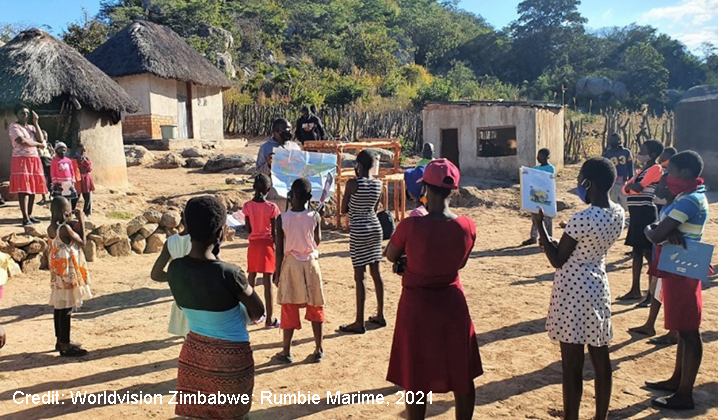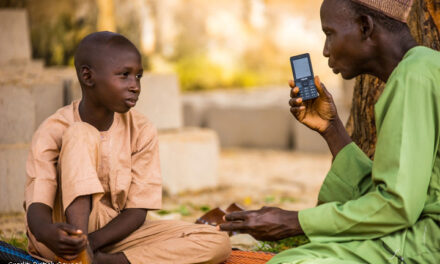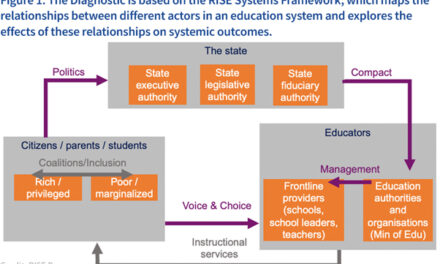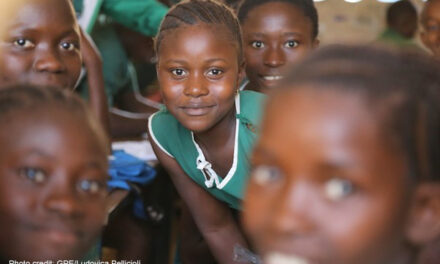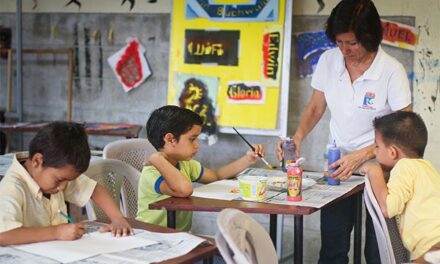This blog was written by Janelle Zwier, Director of the IGATE Programme at World Vision Zimbabwe, with content shared as part of the opening plenary presentation for one of the six September 2021 UKFIET Conference themes: Reimagining Learning Spaces.
I could start this blog with “When schools closed in Zimbabwe in March 2020...” and tell a story of adaptation and lessons learned to reach marginalised girls and boys with continued education, but that story has been told. The more interesting story is about how a crisis shifted the perspectives of what, where and how learning happens – and looking at which of these changes will remain as we reimagine learning spaces.
In rural Zimbabwe, like many places, school is a place where girls and boys go, ideally with a neat uniform and some pens. Learning is what happens in a classroom, led by a teacher (when they are not on strike or incapacitated), with written exams for assessment, an exam far fewer than half will pass. Caregivers contribute to learning by paying fees or, when they are unable to, through their labour by building classroom blocks and latrines. While the divide between home and school is being challenged through changes in national curriculum and policy in Zimbabwe, the legacy of learning being contained in a classroom runs deep.
When schools suddenly closed, textbooks were locked away and teachers scattered. Radio programmes took time to launch and could not reach many remote locations, and online solutions were often beyond families’ means.
Imagining another way of learning in rural areas needed the ‘insider’ perspective of local community members, especially those champions already convinced that the education of their young people was in their hands. They began working out their own strategies to keep marginalised girls and boys learning.
The project I work on, called IGATE, a project funded by UK aid through the Girls’ Education Challenge and led by World Vision, acted as a supporter and facilitator, building up networks of these community champions, fostering collaboration on ideas and solving problems and understanding how to support from a distance and meet emerging needs and opportunities.
|
“Coming to the Learning Circle has become the most interesting part of my day during this lockdown, as I get to take a break from the household chores. I enjoy the time spent doing the Math and English activities and I feel good doing something to help me keep up with school” Girl, 17 |
What emerged was a mosaic of approaches and learning spaces and learning leaders, with diverse configurations based on the people and resources available in each school and community. Community Learning Circles, as the model was eventually called, were informal, and took place in many settings including homes, churches, under trees or other community spaces. They used WhatsApp and printed materials with a focus on literacy and numeracy activities. With a dearth of learning material, low or no resource learning games, low-cost reading cards, numeracy exercises and eventually radios were dispatched. To extend the capacity of the community volunteers, girl leaders were mobilised to reach out to their peers, organise small groups and coordinate the sharing of learning materials.
Evidence points to who was learning and how
|
“When schools closed because of COVID-19, my teacher did not give us homework to do while at home but now we are continuing to learn using reading cards and books at our Community Learning Centre” Girl, 15 |
The IGATE endline evaluation shows that learners who participated in Community Learning Circles had the greatest gains in literacy. Girls developed their leadership skills in practical ways, and more learners were retained when schools reopened. Caregivers and teachers saw improvements in learners’ dispositions and children retained their identities as learners, maintaining their momentum to continue learning and not lose hope and dropout. Girls found community learning a more equitable solution for alternative learning, especially benefiting marginalised learners who could not afford or access other solutions. Learning gains were focused on foundational skills and learners who were struggling in school found Learning Circles supportive and the leaders approachable. Older learners and those with uneducated caregivers were less likely to participate in Community Learning Circles, while some with disability were able to access learning material to take home. Key barriers to participation were chores and income generating activities.
What will remain?
|
“Even now that [learners] are going to school, they come and get materials and I remember a certain teacher calling, telling me that I have seen what you did with this child.” Community facilitator |
Community volunteers rode on surge capacity to meet the initial challenges, but gained more momentum and support when schools closed for a second time. In some instances, this was due to greater collaboration between the school leaders and the community, especially where the gains of the Learning Circles were appreciated when learners returned to school. In other cases, communities and learners themselves increased demand for an alternative learning channel that worked for them, recognising school disruptions were going to continue and schools were not fully functioning when they were able to open.
Sustaining a specific cadre of volunteers for an indefinite future is not possible, but new possibilities have emerged in the process of reimagining informal learning spaces, such as Community Learning Circles, which have benefited marginalised learners in particular. Leaving no one behind and achieving SDG4 in marginalised contexts will require solutions that extend beyond school as we know it. These opportunities rely on communities. Many communities have already demonstrated to themselves and others that learning can be re-imagined, as so can their roles in education. In Zimbabwe, while volunteers are celebrated locally, a more systematic recognition of and investment in deliberate partnerships between school and community stakeholders around learning will more effectively channel this resource for improving not just access, but also quality and equity in education.
What remains is for systems to reimagine workforces and opportunities to effectively weave the capacities available into the mosaic, or “harmonious quilt of resilient resource within”, as Baela Raza Jamil described COVID-19 dividends for the future of education.

